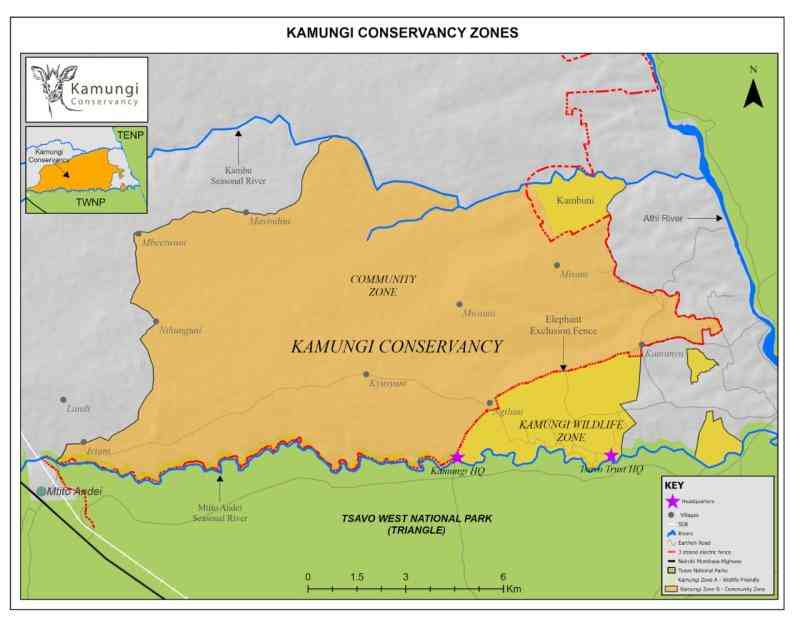
In days gone by, notwithstanding limited access to documented conservation-based science, our progenitors, somehow, co-existed handily with wild animals.
In many instances, the human-wildlife relationship was so kindred that it inspired the creation of numerous fables teeming with beatified animal characters that accurately mimic a whole spectrum of the human persona.
We are charmed by animal tales of yore, confirming our regard for the entwined destinies of human beings and wildlife, hence the need to plan for the future of human-wildlife co-existence. It is time to think benefits of wildlife conservation. Incidentally, by ‘wildlife’ we mean the entire medley of nature’s range of flora and fauna and the biodiversity both jointly forge.
Through the years, many ideas have been tabled in response to increased pressure on land, courtesy of bulging human populations. The growing intersection of human settlements and wildlife habitats is a worrying reality in many parts of the world.
In sub-Saharan Africa, Southeast Asia and parts of South America, people and wildlife share habitats that affect agricultural expansion, urbanisation and other human activities. This overlap can lead to elephants trampling crops, predators preying on livestock, property damage or wild animals maiming or killing people. Rongai area in the outskirts of Nairobi is a case in point.
So, how do we mount a win-win case for humanity and wildlife in biodiversity conservation? Let us consider four.
One, we need to strengthen our community conservation programmes, also referred to as CBCs. By involving local communities in conservation efforts, such programmes entrench a sense of ownership. For example, in Kenya, the Maasai Mara ecosystem benefits from CBC initiatives that engage locals in tourism management and anti-poaching activities.
Two, it is important to prioritise eco-tourism to enhance financial incentives for conservation while creating economic opportunities for local people. In Costa Rica and Tanzania, for instance, eco-tourism initiatives have transformed local economies by attracting visitors interested in observing wildlife in their natural habitats.
But for eco-tourism to succeed, the sustainability of targeted programmes is critical. Therefore, revenues accruing from eco-tourism programmes ought to be managed prudently to support both conservation and community development projects.
Third, agricultural practices that minimise conflict with wildlife ought to be encouraged. This approach will benefit both communities and existing ecosystems. Techniques such as crop diversification, the use of wildlife-friendly fencing and the implementation of early warning systems for wildlife movements can help to mitigate damage to crops and livestock.
Fourth, educating local communities on the ecological value of wildlife and the importance of conservation is important. Awareness programmes that highlight the benefits of wildlife—both ecological and economic—can shift perceptions and foster positive attitudes.
For instance, educational campaigns in parts of Nepal have been instrumental in reducing human-wildlife conflicts. Communities ought to be well informed on safe practices and the role wildlife plays in maintaining a healthy ecological balance.
The writer is Tourism and Wildlife CS
Stay informed. Subscribe to our newsletter
 The Standard Group Plc is a
multi-media organization with investments in media platforms spanning newspaper
print operations, television, radio broadcasting, digital and online services. The
Standard Group is recognized as a leading multi-media house in Kenya with a key
influence in matters of national and international interest.
The Standard Group Plc is a
multi-media organization with investments in media platforms spanning newspaper
print operations, television, radio broadcasting, digital and online services. The
Standard Group is recognized as a leading multi-media house in Kenya with a key
influence in matters of national and international interest.
 The Standard Group Plc is a
multi-media organization with investments in media platforms spanning newspaper
print operations, television, radio broadcasting, digital and online services. The
Standard Group is recognized as a leading multi-media house in Kenya with a key
influence in matters of national and international interest.
The Standard Group Plc is a
multi-media organization with investments in media platforms spanning newspaper
print operations, television, radio broadcasting, digital and online services. The
Standard Group is recognized as a leading multi-media house in Kenya with a key
influence in matters of national and international interest.










